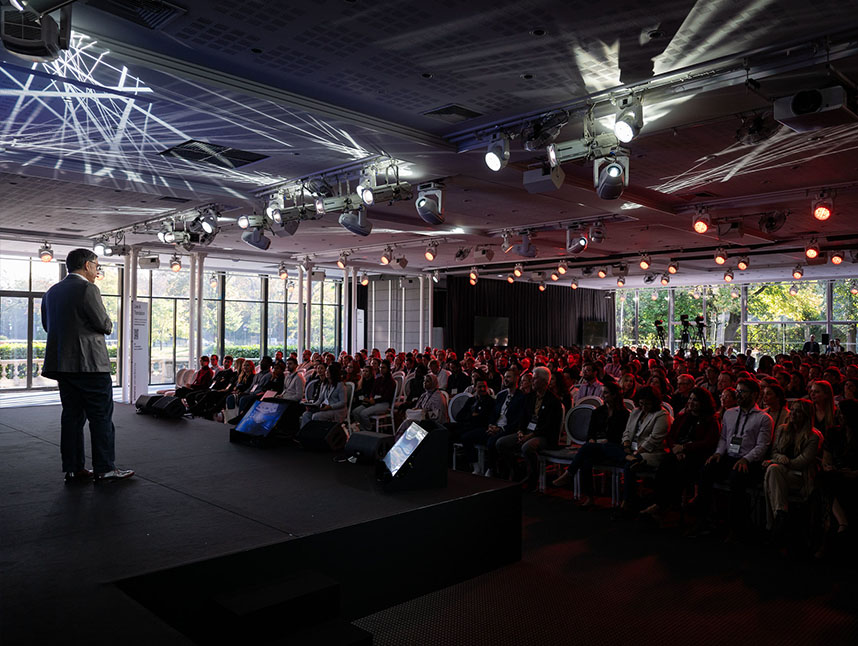How publishers use user needs to drive subscription conversions
Lack of time and resources in editorial offices, news fatigue and reader dissatisfaction - publishers are facing complex challenges these days. The user needs model explains why people consume news. User needs represent a promising application for publishers to create content that interests readers, thereby strengthening reader loyalty and being economically successful.
For a growing number of people, especially younger generations, it is not enough to just be informed by the news. They feel overwhelmed by the flood of news and instead want added value, the need for understanding or problem-solving approaches. This is a major challenge for publishers, which is often compounded by a lack of time and resources and an increased workload. The user needs model illustrates why people consume news - and is therefore of great interest to publishers. In today's world, it is particularly important to understand which stories and topics are of interest to target groups and lead to subscription conversions, page views, engagement and more.
User needs model: background
User needs are a user's needs for news and describe the reasons why people consume it. Newspapers that identify and understand these needs can adapt their working methods and content design and address their target group satisfactorily with customized content.
The user needs model is simple and provides meaningful insights. It was introduced by the BBC World News Service in 2016.
The needs of newspaper readers are based on four key factors:
Fact-oriented: Inform readers.
What happened, when and where did it happen? With fact-based content, readers are able to categorize information and understand it easily. This factor is predominantly included in content strategies as the basis of journalistic work, but is usually overestimated when actually analyzing user needs.
Context-oriented: Explain something to readers.
News fatigue is a big problem for many readers these days, so this factor can be extremely helpful in counteracting that. Readers want more context and explanation provided with this content. Context-oriented content also helps readers to form their own opinions.
Emotion-oriented: Moving readers.
News that moves readers' lives often create an emotional connection. However, journalists usually do not succeed in evoking emotions in their readers through storytelling. The focus should therefore be to make emotions more tangible. Editors should ask themselves which approach or wording can be used to communicate emotions more clearly to readers.
Action-oriented: Motivate readers.
Action-oriented content also helps to counteract news fatigue. People want to understand solutions so that they can take action themselves. This type of journalism connects readers with other people, ideas or concrete events.
User Needs: Reasons why people consume news
Based on the factors described, the focus is usually on six user needs with which journalistic content is brought closer to the readership and their needs.
Update Me
Classic, fact-oriented news formats that inform, contain facts and answer readers' questions.

Educate Me
Background and explanatory pieces are one of the most important user needs. They offer deeper insights into relationships that go beyond traditional news formats and help readers understand complex topics better. This journalistic content thus meets the need for well-founded information and orientation and offers real added value.

Give me perspective
This content, including analyses and commentaries, better classifies topics, events and developments and helps readers understand complex things. They meet the need to critically address a topic by providing pros and cons or by expressing an opinion on the subject matter.

Divert Me
These formats are intended to entertain readers and provide them with a distraction from negative news. With funny, exciting, or entertaining articles — easy, engaging reading — they contribute to a balanced mix of content. News doesn't always have to be serious.

Inspire Me
This encouraging and solution-oriented content offers readers a new perspective that goes hand in hand with hope and a good feeling. At the same time, they promote solution-oriented thinking and reduce the feeling of powerlessness with constructive perspectives. Texts about this are usually longer and contain many details, often including photos.

Help Me
This content is action-oriented and provides readers with a service. They answer specific questions and provide helpful tips. Journalists take readers by the hand, show them how they can proceed and show clear solutions to challenges or problems.

Application of user needs
User needs clarify the reasons why readers consume journalistic content. In order to apply the user needs model and align content with it, editorial teams need to analyze data and combine it with user needs. This gives them a better understanding of the target groups.
In order to apply user needs, articles are categorized according to them and their performance is ranked to enable an evaluation. This rating shows how the existing editorial work matches what readers are interested in and therefore what they actually consume. A minimum number of 1,000 articles is necessary to obtain statistical significance. Depending on the focus of the topic, it is not always necessary to use all of the six user needs described here; this can be adjusted depending on the editorial team.
An improved understanding of the interests of the readership has advantages for both editorial offices and the readers themselves. Readers have an improved news experience, while editorial offices can increase their economic success. At the same time, a better understanding of readers' needs enables an editorial team to save financial resources by creating reader satisfaction and loyalty with content tailored to user needs.
An experiment conducted by the Financial Times consultancy FT Strategies shows that there was a mismatch between the output of content and the readership's interest in user needs at three different British publishers. All three publishers make excessive use of current news on the user need Update me, although categories such as Educate me show significantly higher page views and time spent on the website.

Why publishers should differentiate between news and journalism
According to Amalie Nash, Newsroom Transformation Initiative Lead at INMA, publishers should be careful not to shift their focus exclusively to news, but rather to journalistic content when creating their content. She argues that news and journalism are often used interchangeably in the industry - even though they are not the same thing. A change in approach could therefore be a further step towards responding better to the needs of users.
At a CEO roundtable organized by INMA in August 2024 with 50 executives from the media industry, the differences between journalism and news were discussed. Clear differences emerged. Amalie Nash describes the discrepancy: publishers operate on the assumption that users want constantly updated news. However, when they analyze actual user needs, they find that users want context and solutions, as well as an understanding of how news impacts their lives.
Amalie Nash also argues that journalism too often sticks to pure news and facts about what happened. Why something happened and how these things affect people's lives is usually not presented. Yet it is precisely this journalistic content that interests a large number of readers, as the analysis of user needs shows.

Mediahuis Noord promotes subscription conversions with the application of User Needs
At the INMA Helsinki Media Innovation Week 2024, Alwin Wubs, Editorial Analyst at Mediahuis Noord, presented how the publisher uses data in combination with the application of the User Needs model to increase reader satisfaction and drive subscriptions.
In his presentation, Wubs illustrated how publishers can use breaking and developing news to collect real-time data on user needs - and successfully adapt content. After a special report on a double murder, Mediahuis Noord recorded a sharp increase in page views and sessions per user, but at the same time a drop in the average time spent on the article.
To counteract this, the other articles on the topic were adapted. Instead of making all articles inaccessible behind the paywall, all facts were made available in a freely accessible, regularly updated and prominently placed article - thus fulfilling the primary need of Update me. Further adjustments were made based on information about the readers' user needs. In order to attract readers as subscribers, links to paid articles were inserted that contained all the available information and also fulfilled the Give Me Perspective need in addition to the Update me need.
A total of eight articles were published on Update Me and four articles on Give me perspective. As a result, Mediahuis Noord saw a significant increase in subscriptions and was able to successfully adapt the content with the help of user needs data.

Use the user needs model to promote economic goals
The user needs model offers publishers a valuable opportunity to tailor their content to the needs of readers and thus increase both reader satisfaction and subscription figures. User needs are one of the five components for the digital success of publishers. The six central user needs make it clear that it is not enough to deliver exclusively fact-based news. Rather, publishers should consider the different needs of their target groups in order to build lasting loyalty, counteract news fatigue and thus also promote subscription conversions.
The example of Mediahuis Noord shows how tangible success can be achieved by applying the model. By adapting its content to real-time data and different user needs, Mediahuis Noord can not only increase the length of time readers spend on its content, but also generate targeted subscriptions. This illustrates the importance of a data-driven, user-centered content strategy in modern journalism.
Overall, the user needs model shows that by better understanding their readers, publishers can effectively promote not only their reach and influence, but also their economic goals.
At Purple, we support publishers in achieving their economic goals. Increase your productivity with our AI-based digital publishing platform - we accompany you on the path to digital transformation. Do you have any questions? Get in touch with us today.






%201.svg)











